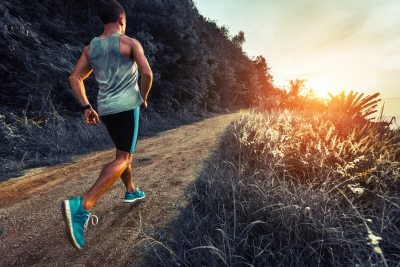
Take precautions when enjoying outdoor activities during these longer, warmer days of the year.
The weather has warmed, and school is out – providing ample opportunities for Americans young and young-at-heart to head outdoors and partake in the activities that are the cornerstones of summer – swimming, hiking, biking, and more. This is the season when the hours outside can fly by us at lightspeed, and if we don’t take proper precautions, that can result in serious health consequences. However, as the often-used saying goes “an ounce of prevention is worth a pound of cure,” preparing for your favorite outdoor activities in advance, and knowing the warning signs to watch out for, will provide the safeguards you need to enjoy all the active fun that summer has to offer.
Though dehydration can occur at any time of year, the heat of summer may increase the risk as the elevated outdoor temperatures can more rapidly deplete us of the vital fluids our bodies need to survive and thrive. Dehydration isn’t about being “very thirsty” – though this is a cue your body can give you that you need to drink water – it is, in fact, a dangerous process that can shut down internal organs and lead to death. You can stop it before it starts with a few simple safety measures. First, if you’re going to be out and active for any length of time, bring along refillable water bottles and drink often. If the activities you’ll be engaging in are a bit more strenuous than just leisurely playing outside, also bring a drink that helps to replace electrolytes – the body’s chemical “hydrators.” Take particular caution against dehydration when you’re swimming. Swimming can be a strenuous activity, albeit a healthy one, and just because your body is in the water, that doesn’t mean it is hydrated. Submersion does not equal hydration. You’ll still need to drink as much water as you would if you were doing any other type of activity. If you experience any of the signs of dehydration – you stop sweating, become lightheaded, have muscle cramps – these are signs you need to stop what you’re doing and focus on re-hydration until all of the symptoms subside. If they don’t or become worse, a trip to the emergency room is in order.
Swimming is a summertime activity that calls to mind fond memories of young fun for many of us. Unfortunately, it is also an activity that brings thousands upon thousands of young people to emergency rooms around the country during this time of year. Beyond the drowning risks that can accompany this outdoor activity, one that is particularly troublesome to us orthopedic surgeons is the genuine danger of catastrophic injury from diving into too-shallow water. From broken limbs to paralysis and yes, even death, these injuries can be adequately prevented by heeding warnings and being smart about water activities. First, carefully scan the area where you’re swimming. Are caution signs present? If they prohibit diving, there is a reason, and you must heed the warnings. If there are no warning signs, this doesn’t mean you’re out of the deep end. The best rule to follow is this – if you can’t see the bottom of the body of water, never, ever, dive into it. Even when you can see the bottom, you may misjudge the distance. Suffice it to say that diving into natural bodies of water can lead to irreversible consequences. So save the diving for human-made pools in which doing so is allowed and you can be sure of the depth.
Hiking and biking activities are also fantastic ways to celebrate being active in the summertime. However, these too require necessary safety precautions. First and foremost – get and correctly use the right safety gear. Appropriately-fitted helmets, shoes, and portable water bottles are essential. Never ride a bike without a helmet, no matter the distance you're planning to travel and don’t go on a hike without bringing along drinking water.
Additionally, stay on marked trails. I know it can seem adventurous to veer off the beaten path, but this can lead to severe consequences. Especially in heavily forested areas, it is easy to get quickly turned around and lose your way. Stick to the trails and abide by the signage. Also, if you’re cycling, remember that pedestrians still have the right-of-way, as they do on a paved municipal rode. If you’re hiking, ditch the earbuds or headphones and keep your ears tuned to cyclists, other hikers and perhaps most importantly – the wildlife around you.
Summertime is one of the best times of year to try and enjoy outdoor activities. However, advanced planning and keeping it safe can help ensure that your memories from this season are happy, not tragic ones.
Source: https://www.medicinenet.com/dehydration/article.htm#can_i_treat_dehydration_at_home
